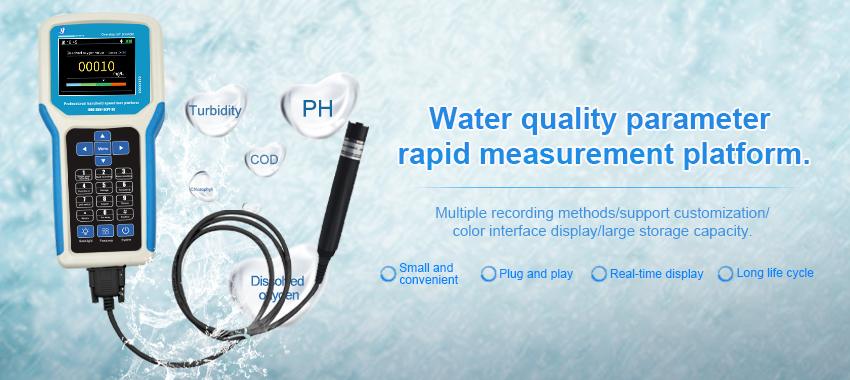Water is the lifeblood of our planet, essential for survival and crucial for maintaining public health. However, contaminated water sources pose significant risks, leading to a myriad of health issues ranging from gastrointestinal diseases to severe neurological disorders. To combat these threats, advancements in water quality detection technology have become paramount. Water quality detectors, leveraging cutting-edge science and innovative engineering, are revolutionizing the way we monitor and ensure the safety of our water supplies. This article delves into the evolution, technology, and profound impact of water quality detectors on public health.

The Evolution of Water Quality Monitoring
Historically, water quality monitoring has evolved significantly. Early civilizations relied on sensory observations—taste, smell, and appearance—to gauge water safety. While these methods provided some level of assessment, they were far from accurate or reliable. As scientific understanding grew, so did the sophistication of water testing techniques.
In the 19th and early 20th centuries, the development of microbiological tests, such as the presence of Escherichia coli (E. coli) as an indicator of fecal contamination, marked a significant leap. These tests, although more scientific, were time-consuming and often required laboratory settings, limiting their real-time applicability.
The latter half of the 20th century saw the advent of chemical analysis, enabling the detection of specific contaminants like heavy metals, pesticides, and industrial chemicals. Spectrophotometry, chromatography, and other advanced analytical techniques became standard tools in water quality assessment. Yet, these methods still had limitations, particularly in terms of speed, cost, and accessibility.
Modern Water Quality Detectors: A Technological Leap
Today, water quality detectors have undergone a technological revolution, integrating sensors, data analytics, and the Internet of Things (IoT) to provide real-time, accurate, and cost-effective monitoring solutions. These detectors employ a variety of technologies tailored to identify different contaminants.
Optical Sensors: Utilizing spectrophotometric principles, optical sensors can detect the presence of various substances by analyzing how they absorb or scatter light. For instance, UV-Vis spectrophotometers can identify dissolved organic matter, nitrates, and other chemicals based on their unique spectral signatures.
Electrochemical Sensors: These sensors measure the electrical properties of water when specific contaminants are present. They are particularly effective in detecting heavy metals like lead, mercury, and arsenic, as well as dissolved oxygen levels, pH, and conductivity.
Biological Sensors: Leveraging the principles of biosensors, these devices use biological components (such as enzymes, antibodies, or microorganisms) to detect contaminants. Biosensors offer high specificity and sensitivity, making them ideal for monitoring microbial contaminants and toxins.
Acoustic Sensors: By emitting sound waves and analyzing their reflections, acoustic sensors can detect suspended particles and sediment levels in water bodies. This technology is particularly useful for monitoring turbidity, an indicator of water clarity and potential contamination.
Real-Time Monitoring and Data Analytics
One of the most significant advancements in water quality detection is the integration of IoT. Modern detectors are equipped with wireless communication capabilities, enabling them to transmit data in real-time to central monitoring systems. This real-time data collection allows for immediate response to potential contamination events, significantly reducing the risk to public health.
Data analytics play a pivotal role in processing the vast amounts of data collected by these detectors. Machine learning algorithms can identify patterns, predict trends, and alert authorities to potential threats before they become critical. Predictive analytics enable proactive management of water resources, optimizing treatment processes and ensuring the continuous supply of safe water.
Impact on Public Health
The implementation of advanced water quality detectors has had a profound impact on public health, manifesting in several key areas:
Early Detection and Prevention: Real-time monitoring facilitates early detection of contaminants, allowing for swift intervention. This proactive approach prevents outbreaks of waterborne diseases, such as cholera, typhoid fever, and gastrointestinal infections, which disproportionately affect vulnerable populations.
Improved Treatment Efficiency: By providing continuous data on water quality, detectors enable water treatment facilities to optimize their processes. This results in more efficient use of resources, reduced operational costs, and improved treatment outcomes.
Enhanced Regulatory Compliance: Water quality standards and regulations are crucial for protecting public health. Advanced detectors help water utilities and regulatory bodies ensure compliance with national and international standards, fostering transparency and accountability.
Community Empowerment: In many regions, community-based water quality monitoring initiatives have emerged, empowered by low-cost, user-friendly detectors. These initiatives enhance local capacity to manage water resources sustainably, fostering a sense of ownership and responsibility towards water safety.
Environmental Protection: Water quality detectors also contribute to environmental conservation by monitoring the impact of industrial discharges, agricultural runoff, and other anthropogenic activities on water bodies. This information is vital for developing and implementing effective pollution control measures.
Challenges and Future Directions
Despite the remarkable progress, challenges remain. The cost of advanced detectors can be prohibitive for some communities, particularly in low-income countries. Ensuring access to these technologies and bridging the digital divide is essential for achieving universal water safety.
Moreover, the integration of diverse data sources and the standardization of monitoring protocols are ongoing challenges. Interoperability issues between different detector systems and the need for harmonized data formats must be addressed to facilitate seamless data sharing and analysis.
Looking ahead, the future of water quality detection holds great promise. The continued miniaturization of sensors, advancements in artificial intelligence, and the expansion of IoT networks will further enhance the capabilities and accessibility of water quality monitoring systems. Innovations in nanotechnology and biotechnology could lead to the development of new, highly sensitive detectors capable of identifying emerging contaminants.
Conclusion
Water quality detectors are indispensable tools in the fight against waterborne diseases and the protection of public health. By providing real-time, accurate data on water quality, these technologies enable proactive management, improved treatment efficiency, and enhanced regulatory compliance. As we continue to innovate and overcome challenges, the vision of safe, accessible water for all becomes increasingly attainable. The evolution of water quality detectors is not just a technological advancement; it is a cornerstone of public health, environmental sustainability, and global well-being.